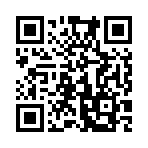safe.HTMLAttr
Syntax
Returns
Alias
Introduction
Hugo uses Go’s text/template and html/template packages.
The text/template package implements data-driven templates for generating textual output, while the html/template package implements data-driven templates for generating HTML output safe against code injection.
By default, Hugo uses the html/template package when rendering HTML files.
To generate HTML output that is safe against code injection, the html/template package escapes strings in certain contexts.
Usage
Use the safe.HTMLAttr function to encapsulate an HTML attribute from a trusted source.
Use of this type presents a security risk: the encapsulated content should come from a trusted source, as it will be included verbatim in the template output.
See the Go documentation for details.
Example
Without a safe declaration:
{{ with .Date }}
{{ $humanDate := time.Format "2 Jan 2006" . }}
{{ $machineDate := time.Format "2006-01-02T15:04:05-07:00" . }}
<time datetime="{{ $machineDate }}">{{ $humanDate }}</time>
{{ end }}Hugo renders the above to:
<time datetime="2024-05-26T07:19:55+02:00">26 May 2024</time>To declare the key-value pair as safe:
{{ with .Date }}
{{ $humanDate := time.Format "2 Jan 2006" . }}
{{ $machineDate := time.Format "2006-01-02T15:04:05-07:00" . }}
<time {{ printf "datetime=%q" $machineDate | safeHTMLAttr }}>{{ $humanDate }}</time>
{{ end }}Hugo renders the above to:
<time datetime="2024-05-26T07:19:55+02:00">26 May 2024</time>